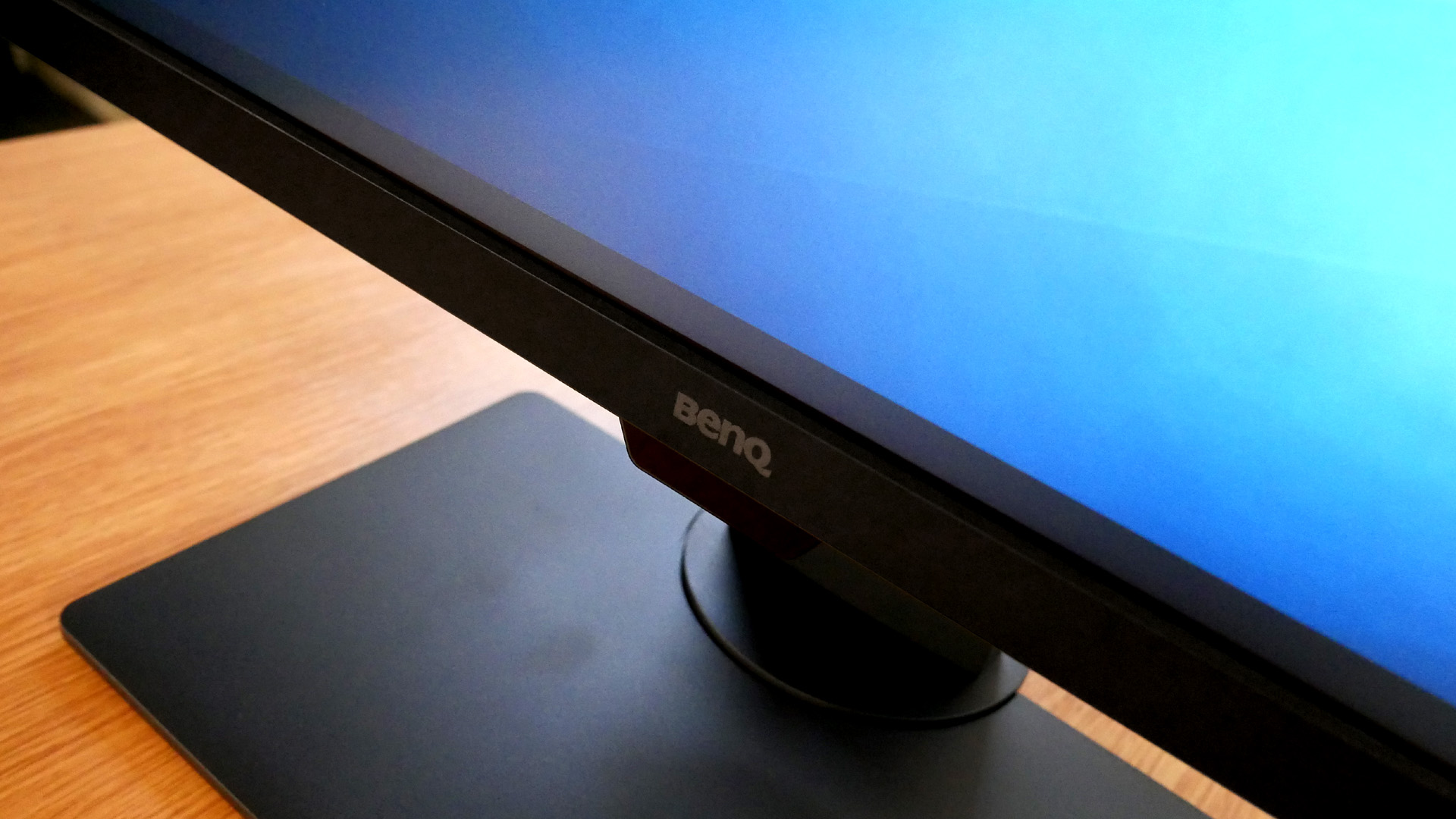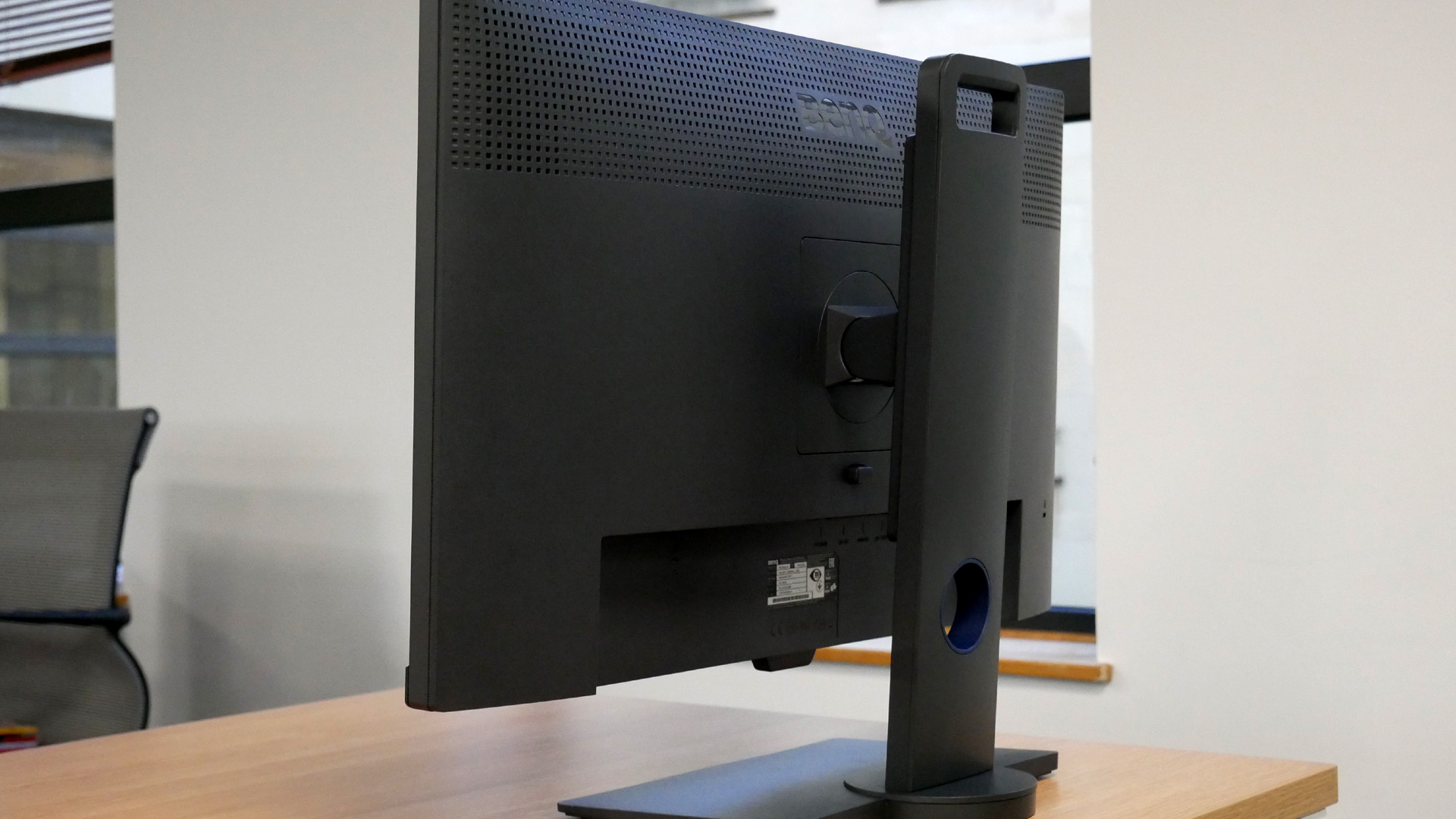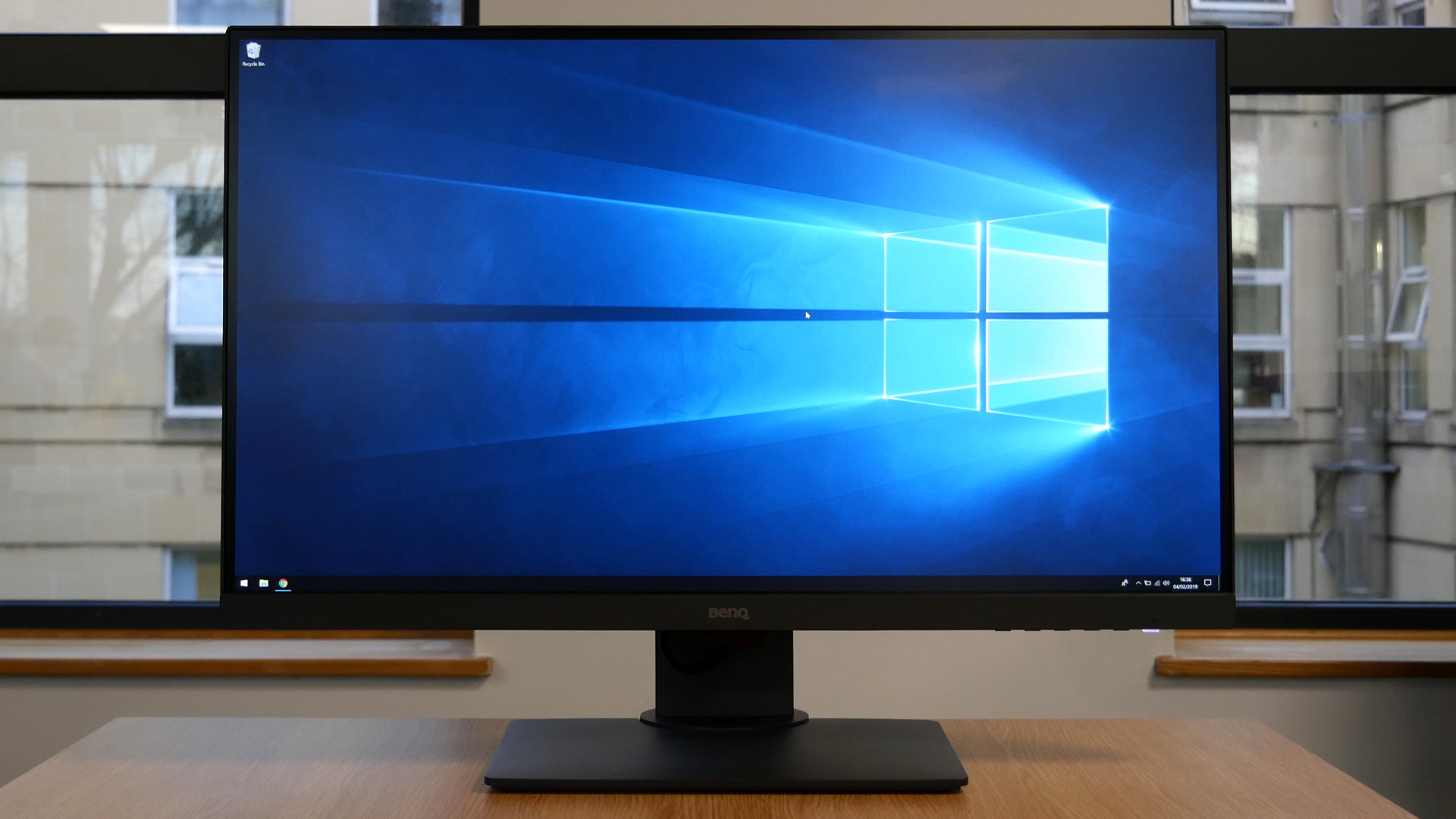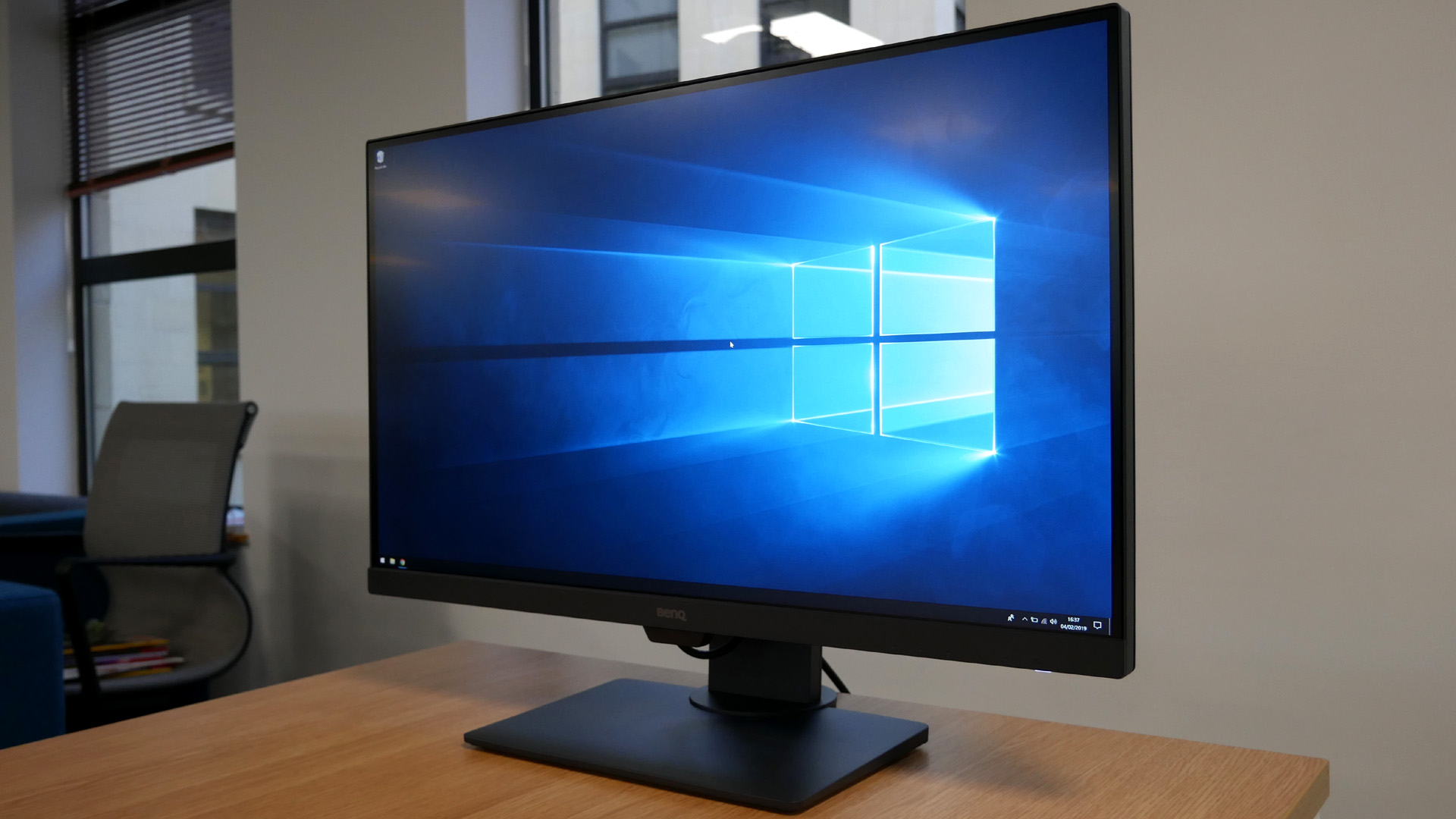TechRadar Verdict
BenQ’s new 27 incher is a no-nonsense 4K monitor with a quality IPS panel and its sights set on serious computing and content creators
Pros
- +
Accurate, high-quality IPS panel
- +
Plenty of desktop real estate
- +
Tight pixel pitch makes for lots of detail
Cons
- -
Only 60Hz refresh
- -
No adaptive sync
- -
No USB Type-C connectivity
Why you can trust TechRadar
In this age of zany ultra-wide PC monitors, mega-bright HDR monitors, adaptive-sync monitors, super-high refresh monitors, even monitors with nanotechnology-enhanced backlights, is there any appetite left for a conventional monitor aimed at what you might call serious computing that does the basics right? In short, does anyone care about panels designed for plain old productivity any longer?
If your answer is yes, BenQ’s new PD2700U is definitely worth a look. It conspicuously lacks any of the aforementioned whizz-bang features. Instead, its appeal is based on a high-quality 27-inch IPS LCD panel, full 4K resolution and properly engineered control electronics.
In other words, the new BenQ’s proposition involves plenty of pixels and accurate colors, but not 144Hz refresh, quantum dots or local dimming.
More to the point, this 4K monitor is exactly that trade-off between a high-quality panel with relatively few frills on the one hand, and all those bells and whistles on the other, that you have to make at this price point. If you want it all in a single monitor, you’ll be spending around three times the money.
(ed: By all means, do check out our buying guides for best business monitors, best monitors for photo-editing and best monitor for digital design)

Price and availability
At $535 in the US, £430 in the UK and AU$849 in Australia, the BenQ PD2700U isn’t exactly cheap.
But it represents a lot of high quality pixels for the money. For context, you’re looking at well over $1,000 or £1,000 to secure a 27-inch 4K monitor with true HDR capability and 144Hz refresh from Asus or Acer.
Sign up to the TechRadar Pro newsletter to get all the top news, opinion, features and guidance your business needs to succeed!
That said, a number of of 27-inch IPS 4K alternatives can be had for less money. The LG 27UK600 matches the BenQ PD2700U pretty much point-for-point on paper but typically costs 15 per cent less.

Design and features
If it’s pure styling sizzle you seek, look elsewhere. The BenQ PD2700U is an understated operator. The monotone black plastics and low-key branding make for an anonymous desktop presence. That said, the build quality feels robust and the slim bezels on three sides of the LCD panel ensure a contemporary feel.
The screen’s stand is also sturdy and offers a full range of adjustment, including rotate into portrait mode. BenQ has likewise bequeathed the PD2700U with a decent array of ports, including both standard and Mini DisplayPort inputs in 1.4 spec, an HDMI 2.0 socket and a USB 3.0 hub.

What it doesn’t offer is USB Type-C connectivity, which is a pity if you’re planning to drive this screen from a modern laptop.
That single USB-C cable for power, display and peripherals is such a neat solution. Still, BenQ has equipped the PD2700U with an integrated keyboard video mouse (KVM) switch and multi-stream transport for supporting daisy-chaining multiple monitors.
As for the PD2700U’s 27-inch LCD panel, it’s an IPS affair with wide viewing angles, static contrast rated at 1,300:1 and maximum brightness of 350cd/m2. That latter figure betrays the fact that this isn’t a true HDR monitor.
It is HDR10 compliant and can process an HDR signal. But with that limited level of maximum brightness and no local dimming capability, the full HDR experience won’t be on offer. That said, the HDR10 compliance does at least dictate wide color gamut capability, in this case Rec. 709 and 100 per cent of the sRGB color space.
As a 4K panel, you’re getting a hefty 3,840 by 2,160 pixels, though the refresh at native resolution is limited to an increasingly old school 60Hz. Squeezed into a 27-inch monitor, that translates into a nice, tight 163 DPI pixel pitch.

Performance
With suitably calibrated expectations, you won’t be disappointed by the BenQ PD2700U. It won’t blow your socks off out of the box with insane levels of HDR-style brightness or wow you with slick 120Hz refresh. But it is a very nicely judged monitor.
Speaking of calibration, each PD2700U comes professionally calibrated from the factory. That no doubt explains why it puts in an impeccable performance in our test images.
You won’t find any evidence of compression in black or white scales, gradients are perfectly smooth, the viewing angles are fantastic and the color balance bang on.

As for the screen’s HDR functionality, it’s rather limited thanks to the relatively low brightness and lack of local dimming. But it does at least allow for the processing of HDR content and adds a modicum of punch to the screen’s visual performance. Likewise, the 1,300:1 static contrast ratio translates into reasonably low black levels.
Along with the sheer quality of the panel, the 4K resolution is the other big upside. On a 27-inch panel it makes for very nice font rendering indeed, plus plenty of desktop real estate and fantastic image and video clarity. 4K movies look razor sharp on this monitor.
Granted you probably won’t want to run the Windows desktop scaling at 100 per cent. That makes for uncomfortably small fonts, icons and screen furniture. But bumping it up to 125% or 150% enables comfortable viewing while retaining plenty of working space.
It’s certainly an interesting alternative to, say, a 40-inch 4K monitor. The latter gives you a lot more physical screen, but also much larger pixels and significantly less crispness and clarity.
As a gaming proposition, the 60Hz refresh, 5ms response and lack of adaptive sync leave the PD2700U looking a little off the pace.
But it’s quick enough in reality and while it would be far from an obvious choice for playing first person shooters, the PD2700U is more than up to playing games within its broader remit, which is tilted more towards productivity and content creation.

Verdict
You could be forgiven for thinking the BenQ PD2700U is basically a bit banal. It’s short on many of the cutting-edge features that now dominate the PC monitor market.
Instead, it offers a quality IPS panel, a load of pixels and lots of color accuracy. In other words, the PD2700U delivers fidelity and precision and doesn’t bother with the showbiz theatrics that have almost become the norm in the monitor market. That includes low-key styling.
Specifically for gaming and watching movies, therefore, your $500 / £400-odd is better spent elsewhere. The PD2700U will turn its hand to those applications happily enough.
But it’s productivity - you know, proper computing - where the PD2700U really shines. The only slight snag is that you can get a pretty similar experience for a bit less money from the likes of LG.
Technology and cars. Increasingly the twain shall meet. Which is handy, because Jeremy (Twitter) is addicted to both. Long-time tech journalist, former editor of iCar magazine and incumbent car guru for T3 magazine, Jeremy reckons in-car technology is about to go thermonuclear. No, not exploding cars. That would be silly. And dangerous. But rather an explosive period of unprecedented innovation. Enjoy the ride.
